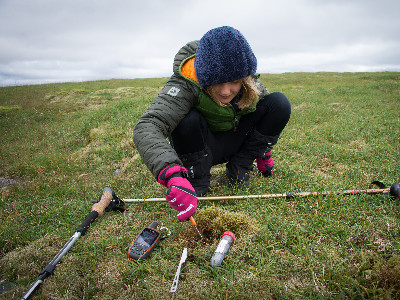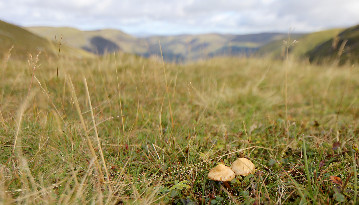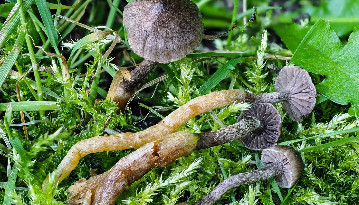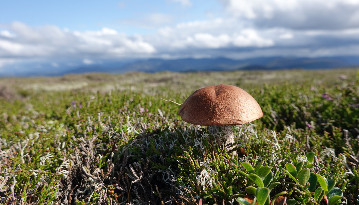Monday 18th July 2022, 10:10am

A scheme to enlist hillwalkers in a mountain soil research project has produced valuable results.
Two species of fungi new to the UK have been discovered in the Cairngorms by volunteers working with Plantlife, the international wild plant conservation charity and the James Hutton Institute.
Amanita groenlandica is an arctic species originally described from Greenland and circumpolar in its distribution, with Scandinavia its previously recorded most southerly location. Acrodontium antarcticum is a fungus originally described from Antarctica.
These rare fungi, previously found poles apart, both favour the unique cold habitat and climate of Scotland’s Cairngorms. This internationally important landscape which, due to its elevation and distance from the sea, experiences an exceptionally cold and snowy climate, supports the best examples of arctic-alpine vegetation found anywhere in the UK.
The collaboration of mountain enthusiasts, cutting-edge science at the James Hutton Institute and experts from Plantlife is helping us to understand the pressures from climate change and atmospheric pollution on this fast-changing habitat. Our knowledge of the close connection between plants and fungi means that the data collected can be used to prioritise habitats for conservation and restoration and provide a baseline against which the effects of climate and environmental change can be monitored.
Last summer 219 soil samples were collected by the hillwalking community at various altitudes from 55 of the 58 Munros of Scotland’s Cairngorms National Park. DNA was extracted from the soil and sequenced by scientists at the James Hutton Institute in Aberdeen, resulting in over 17000 records of 2748 fungal species in just three months.
Other notable discoveries include the unforgettably named “Strangler” fungus (Squamanita contortipes), which was considered very rare, with only one previous record in the UK from the 1950s, until recent studies. Its name derives from its parasitic ability to take over other fungi. Another species of the “Squamanita” genus that was previously unknown to science was also uncovered.
The vibrant and colourful Violet Coral fungus was also found in alpine grasslands on two Munros. This species is one of the UK’s rarest grassland fungi and acts as an important indicator of unimproved grasslands – a threatened but highly valuable landscape in Scotland that supports more species than any other, and stores a third of the world’s land carbon: a natural solution in the climate crisis.
This pioneering study is part of Plantlife’s Rare Plants and Wild Connections project, funded by the National Lottery Heritage Fund and the Cairngorms National Park Authority, with support from NatureScot. Sample analysis and the work of The James Hutton Institute Scientists was funded by the Rural and Environment Science and Analytical Services Division of the Scottish Government.
Plantlife’s Keilidh Ewan, project manager, said: “There are more living organisms in just one teaspoon of soil than there are people on the planet, and soil biodiversity has a hugely important role to play in the functioning of ecosystems. The coming together of researchers, conservationists and the local community has uncovered some wild and wonderful species and has created evidence-based foundations against which the effects of climate and environmental change can be monitored going forward. This is helping us to understand the threats that this fragile habitat is facing and, ultimately, the more we understand, the better we can protect these much-loved places for the future.”
Andrea Britton, Ecologist at the James Hutton Institute, said: “Fungi are crucially important to the functioning of our alpine ecosystems, but because they are mostly hidden below ground, and because alpine ecosystems are remote and difficult to access, we know very little about the distribution and diversity of fungi in this iconic habitat. Thanks to the hard work of volunteers and scientists coming together, the data from this survey will add significantly to our knowledge of this vital group and can be used to start identifying which habitats and locations are particularly important for conservation of fungal diversity.”
Many of Scotland’s alpine species are already living on the edge of their natural range with nowhere else left to go in a landscape that is warming up fast, and these are the species most at risk of extinction. In harsh environments such as these, fungi have a crucial role to play in helping arctic-alpine plants obtain the essential nutrients needed to survive, yet very little is known about them, so these exciting scientific discoveries come at a crucial time.
Photo above: Soil sample being taken by a volunteer. Photo by Andrea Britton


